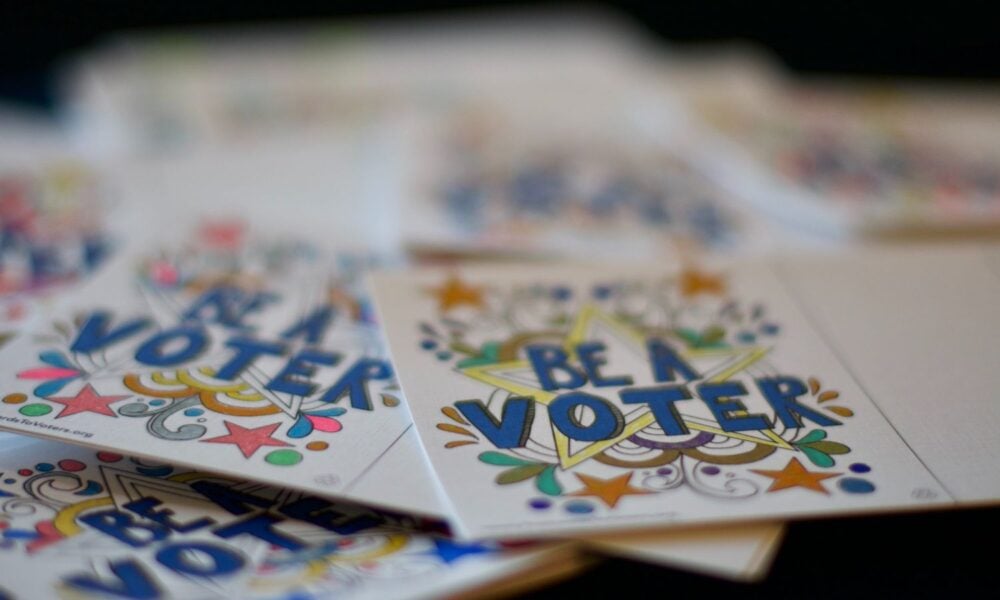Most college students are voters. In 2020, researchers at Tufts University reported a national student voting rate of 66%—and that number has the potential to increase in upcoming elections as colleges explore a variety of strategies to get their students to the polls, including initiatives like on-campus voter registration drives and partnerships with organizations dedicated to the student vote.
This momentum is exciting. Our democracy strengthens as more people vote. Understanding who college voters are and what motivates them can help organizers who believe in our democratic principles turn more students into voters.
To explore this, I examined the Tufts University data along with recent studies on voter trends and motivations, identifying areas of growth and opportunities for campus community members to organize their students. Here are my key takeaways:
A dramatic increase in student voting

Overall, student voter turnout has increased dramatically over the last decade. The national student voting rate increased by 14% between just 2016 and 2020. Colleges have historically engaged with students on voting, but the historic turnout stunned the authors of the Tufts report.
The high yield rate between student registration and student turnout occurred in part due to increased youth political mobilization, with movements mobilizing students around pressing issues such as climate change and gun control. Increased access to the polls due to the pandemic also allowed for increased participation for all voters.
STEM students are voting in higher numbers
STEM students, who historically have been less likely to vote than students of other disciplines, rocked the vote in 2020. Between 2016 and 2020, voter turnout among STEM students increased by double digits. This increase in turnout coincides with an ongoing surge in science activism. Faculty at institutions including Rockefeller University and MIT have even brought science policy into the classroom, modeling political engagement for STEM students. These curricular activities can foster civic engagement in students, shifting professional norms within science.
Voter turnout increased among all students
These shifts in turnout are encouraging but there is still work to be done. White women students achieved the highest voting rate in 2020 of any demographic at 73%. Black women students saw the smallest increase, by 8% between general elections, voting at a rate of 66%. Given that Black women typically have some of the highest voting rates across demographics, the researchers stated the reasons for this remained under investigation.
Asian American students, despite their increase in turnout from 34% to 51%, still lagged dramatically behind students of other demographic groups. This student data aligned with national voter turnout rates in 2020; though Asian Americans are a growing voter bloc, studies have found a lack of engagement from major political parties among Asian American communities.
The Tufts data also highlighted other existing barriers that student voters face. For example, the researchers found that in 2020, private academic institutions achieved the highest voting rates of all institutions that participated in the Tufts study. Compared to their public counterparts, private colleges and universities often have more resources to create and implement voting initiatives on campus. They are also generally comprised of wealthier student bodies, aligning the Tufts findings with data from the 2020 Census Bureau report, which showed voter turnout increased with income range.
Challenges ahead: efforts to suppress the student vote are underway
Obstacles loom, however, for building on this momentum. In particular, in the run-up to the 2024 election, anti-democratic efforts to suppress the vote have moved at a near-record pace. This includes focused and intensifying efforts to target and suppress the student vote.
Indeed, those who seek to reduce student voter turnout are actively advocating for and deploying a barrage of additional obstacles to voting. This includes creating barriers to student voter registration, limiting access to campus polling places, and other tactics.
These efforts, together with heightened polarization of higher education, has left administrators unsure of how best to approach civic engagement on campus, particularly as Republican legislatures have passed several laws to suppress votes in states including Texas, Florida, and Kansas. Being aware of and understanding these voter suppression tactics is crucial for students, educators, and college administrators who can take steps to counter them and help protect student access to the polls.
Empowering student voters in 2024
Again: the more people participate in our democracy, the stronger it becomes.. We look forward to seeing more college students vote in 2024, and college communities should do all they can to turn more students into voters.
Political scientists have highlighted that voting is habit-forming, and finding ways to regularly engage with the voting process can encourage more students to get to the polls.
If you’re part of a campus community, I encourage you to get involved with your institutions’ existing initiatives to mobilize student voters, or see if they have a partnership with organizations like Students Learn, Students Vote or Campus Vote Project. You can also explore resources on best practices for engaging students.
For STEM faculty looking for resources, Science Rising has tips and modules for use in the classroom, and Students Learn, Students Vote has created a science and civics guide to prompt discussions around science and democracy. Whether you are a student yourself, a staff member, or faculty member at a college campus, you can promote a culture of civic engagement at their institution. Let’s all do our part to ensure that student voters make their voices heard in 2024!

